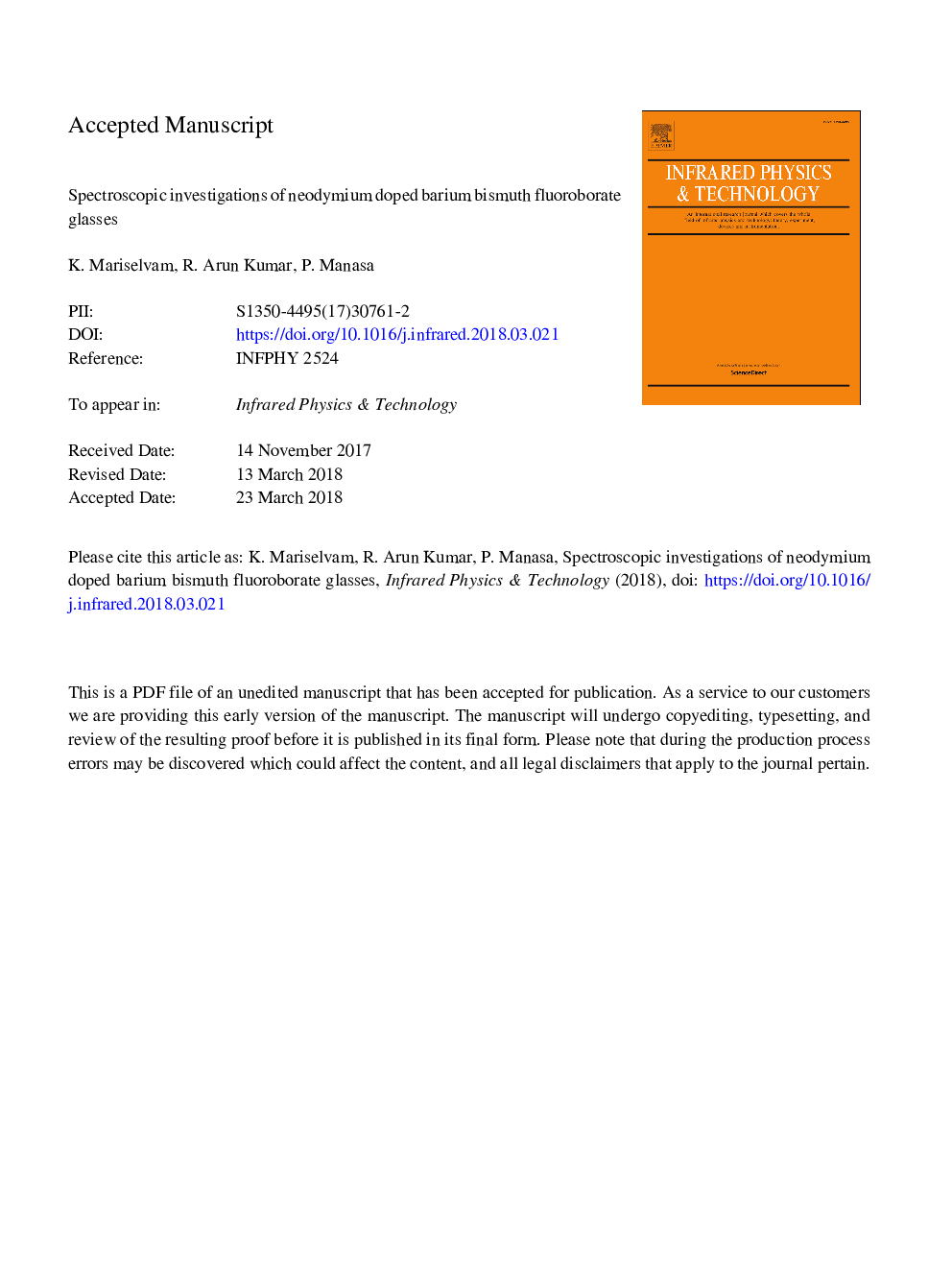| Article ID | Journal | Published Year | Pages | File Type |
|---|---|---|---|---|
| 8145585 | Infrared Physics & Technology | 2018 | 37 Pages |
Abstract
A new series of neodymium doped barium bismuth fluoroborate glasses with the chemical composition of (70-x)H3BO3â¯+â¯5Bi2O3â¯+â¯10BaCO3â¯+â¯7.5CaF2â¯+â¯7.5ZnOâ¯+â¯xNd2O3 (where xâ¯=â¯0.05, 0.1, 0.25, 0.5, 1, 2 (in wt.%) have been prepared by the conventional melt quenching method. The powder X-ray diffraction pattern confirms the amorphous nature of the prepared glasses. The Urbach energy reveals the minimum disorderness of the glass samples. Judd-Ofelt intensity parameters (Ωλâ¯=â¯2, 4 and 6) were derived from the absorption spectrum and were used to calculate the emission properties. The near infrared emission spectra recorded with 808â¯nm laser diode excitation for different concentrations of Nd3+ ions and the emission for the 4F3/2â¯ââ¯4I11/2 transition at 1060â¯nm found to be high intense. The measured decay curves for 4F3/2 fluorescent level exhibit single exponential nature with shortening of lifetime with increase in concentration. The laser parameters such as stimulated emission cross-section, branching ratios, gain band width and optical gain values are found to be high for BBFB:Nd3+ (0.5â¯wt%) glass. Hence, the results suggested that the present BBFB:Nd3+ (0.5â¯wt%) glass could be used as an efficient infrared laser source around 1.06â¯Î¼m region.
Related Topics
Physical Sciences and Engineering
Physics and Astronomy
Atomic and Molecular Physics, and Optics
Authors
K. Mariselvam, R. Arun Kumar, P. Manasa,
